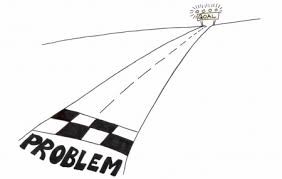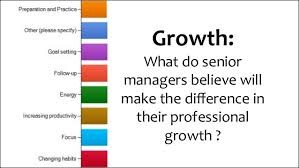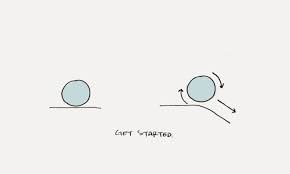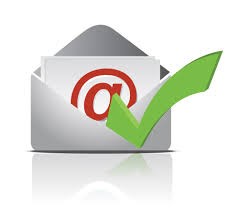Ravi Speaks:-
From 1996 to 2019, I have been acting as a team manager in the field in different capacities. May it be from a small team of 7 representatives to the fullest strength of 550 plus representatives. The one thing which I have always been evaluating is my level of effectiveness in my capacity as a facilitator. If you go deep into the real work which a senior manager at the top has to do -it is to ensure that the things are delivered with the maximum product yield and with no untoward happening in a very conducive and congenial manner within the total team under his command. The beauty of the senior manager would be to set the tone of the whole team in such a competitive atmosphere that each one contributing his best of efforts is being analyzed and looked after individually in a manner that he thinks positive and desirous for his brighter career too. Nowhere the signs of stagnation should be reflected in any functioning of your team. Only then would the entire team would deliver the dividends incredibly. Of course, not a straightforward thing to ensure.

The Incredible Productive Curve.

Problem Solving Approach Leads To More Productive Yield.


Managerial Solutions Increase In Productivity.
We can all work smarter, too. That’s the actual key to success: working harder and smarter. Fortunately, working harder is kind of easy. You just have to, well, work harder. But how can you work smarter? That’s a lot tougher. So, everyone wants to work smarter and not harder. How Can that be possible?


Purpose—Growth.
For the incredible productivity, I am in a very short form taking out certain well-acclaimed tips/snippets from Belle-Beth Cooper-and elaborating the same: –
1. Rework Your To-Do List: -One way to do this is by choosing one to three most important tasks, or MITs. These are the big, tough tasks for your day that you need to get done; the ones that will keep you in the office past the time you planned to leave or working after dinner if you don’t get through. Another to-do list tip that can reduce work anxiety is to write your to-do list the night before. I often end up in bed not only thinking about what I need to do the next day but also planning the day; obviously, that makes it difficult to sleep. Writing my to-do list before I go One more to-do list tip: ‘Focus only on today’.


Effective Team Manager.
2. Measure Your Results, Not Your Time: – The whole idea of working smarter rather than harder stems from the fact that many of us put in more and more hours only to find we don’t get more done. That’s why we want to find methods to be more productive in less time.
3. Build Habits to Help You work: – If I don’t have a plan for what to work on first, I procrastinate and waste time in the mornings. You might have a different dangerous time for procrastination, but getting started seems to be a hurdle for most of us. We must develop the habit of ‘jumping into the fray’-approach for any work to get started rather than postponing or delaying the same.
4. Track Where You Waste Time: – If you’re struggling to be productive, it’s tempting to change your routine or try new solutions before you uncover the real problem. I’ve done this in the past and found it never leads to a long-term solution. Why not concentrate and try to reach the bottom of the reason for wasting time unnecessarily which might be another cause of procrastination.
 |
| Tracking Your Time Most Important. |
5. Build Habits to Help You Stop Working: –
Quit while you’re ahead. Take it from Hemingway: “The best way is always to stop when you are going well and when you know what will happen next. If you do that every day, you will never be stuck.”
Set a firm cut-off time. Most days he has a (pretty extreme) strict cut-off time of noon. You could make this work with an evening cut-off time to get you out of work by, say, 5 p.m.
Plan something cool after work. Another tip from ‘Ogle’ is to plan an activity or event for after work. In Ogle’s case, he plans to catch up with friends or attend events around 12:30 or 1 p.m., which helps reinforce his noon cut-off time.
Create a wind-down routine. Having a routine to help you wind down from work can be helpful if you often struggle to switch off. Light exercise works well for me, so I like to walk home from the office or take a walk after work. Many people go for an evening walk as part of their going-to-bed routine because it’s such a good winding-down activity.

6. Take More Breaks: – Stephen Covey in ‘7 Habits of Effective People’ tells a story about a woodcutter whose saw gets blunter as time passes and he continues cutting down trees. If the woodcutter were to stop sawing, sharpen his saw, and go back to cutting the tree with a sharp blade, he would save time and effort in the long run.
“Sharpen the Saw means preserving and enhancing the greatest asset you have—you. It means having a balanced program for self-renewal in the four areas of your life: physical, social/emotional, mental, and spiritual.”
7. Take More Naps: – Research shows naps lead to an improvement in cognitive function, creative thinking, and memory performance. In particular, napping benefits the learning process by helping you take in and retain information better.
8. Spend More Time in Nature: – Daniel Goleman suggests spending time in nature to help you reset your attention span and relax your mind as mentioned in his – ‘Focus-The Hidden Driver of Excellence.
One experiment he mentions tested how relaxed people were when taking a walk down a city street versus in a quiet park. The study found that the level of attention needed to navigate a busy city street is high enough that the walk doesn’t let the brain relax enough to reset your focus level:- “Unlike natural environments, urban environments are filled with stimulation that captures attention dramatically and additionally requires directed attention (e.g., to avoid being hit by a car), making them less restorative.”

Managers & Leaders’ Traits.
9. Move and Work in Blocks: – I recently read about a method called “workstation -popcorn” in a blog post by Joel Runyon. You set up at various cafes, workspaces, or, as in Colin’s case, pubs to get chunks of work done throughout the day. Workstation popcorn starts with a clear, thought-out to-do list: You create a plan for what you will accomplish at each location so you can immediately jump into those tasks.
Runyon breaks up his to-do list into sections—one per cafe that he plans to visit–and each section into three simple tasks. Once he gets through the group of tasks he has set, he moves on to the next cafe on his list.
Of course, you can sort out your task list. However, suits you best, but the important part to note is having a clear finishing point based on your task list, rather than the time you will move to a new location.

Productive Moves To Be started.

Check Your Emails First.
Dealing with important issues first thing helps me make quick decisions about whether my day needs to be adjusted to fit in with what everyone else is doing or whether I can proceed with the tasks, I already had planned.
Thus, the above ten points are taken out from the snippets of ‘Belle Beth Cooper’ explains how one can be incredibly more productive, and if he applies them in his day to day functioning, he is surely going to have a marked improvement in his results which would reflect the significant increase in the productivity part.
======================